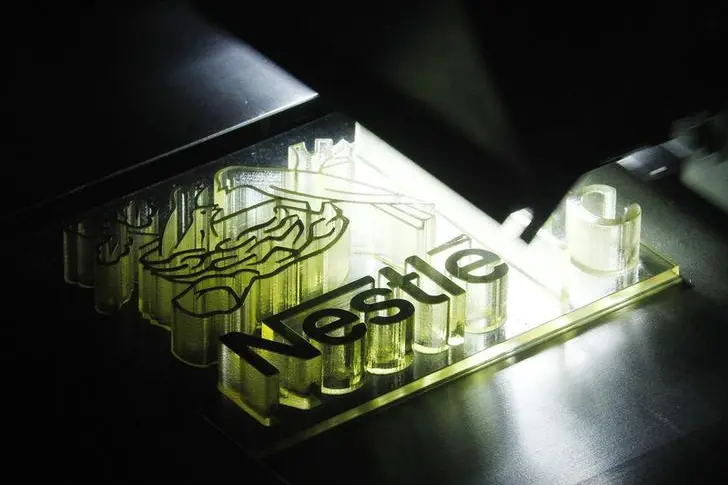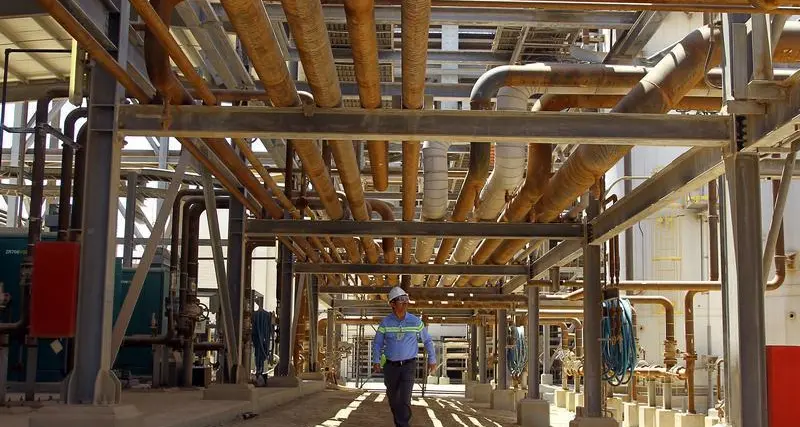PHOTO
27 December 2016
By Shane McGinley
Does food taste different at the top of Burj Khalifa? Nestlé S.A Nestle, the largest food company in the world, may have the answer as it researches the impact of altitude on the culinary arts.
Stefan Catsicas, executive vice president at Nestlé, sent a team of scientists last year to the ThreeSixty in Saas-Fee in Switzerland, which at 3,600 metres above sea level is the world’s highest revolving restaurant, to investigate if there is a link between altitude and the perception of food quality.
Back at their research lab, located at 833 metres above sea level, the scientists repeated the same cooking procedure using the same ingredients and techniques that had used at the restaurant.
Their results concluded that food cooked at higher altitudes actually looks and tastes better, Catsicas told Zawya while on a visit to Abu Dhabi this summer.
“We published research showing that not only taste and perception can change with altitude, but also the way food is cooked is impacted by the altitude… So it is actually more complex, but the interplay between the two does have a role,” said Catsicas, who is also chief technology officer and head of innovation, technology, research and development at Nestle S.A., with a lot of his team working at the Nestlé Research Center in Switzerland.
Asked if these insights have any bearing on Dubai and its collection of record-breaking tall towers, especially the Atmosphere restaurant located atop the Burj Khalifa, the world’s tallest tower, he said the impact may be “more subtle” than that experienced at higher altitudes such as the test locations in Switzerland.
“This (Burj Khalifa’s 820 metre height) is also the height of a pressurised cabin. In order to measure an effect you need a relatively significant impact, in science we usually say you need at least 30 percent,” he said.
“What is quite intriguing is the emotional impact (of food), which is not as easy to measure.”
Making chocolate healthier
Questions like these are ones which Catsicas’ team at the Nestle Research Center are faced with every day.
Earlier this month, its scientists made global headlines when they announced they had devised a way to reduce the amount of sugar in chocolate products by up to 40 percent without impacting the taste or enjoyment felt by consumers, in a breakthrough hailed by obesity campaigners.
Nestle said it is patenting its findings and hopes to start introducing new products using the research in 2018, Reuters reported.
Catsicas said that while his research has obvious commercial advantages, he also sees the altruistic element of his work. “We want to use nutrition in a variety of different ways. We want to use nutrition to help cure diseases… We must always test ourselves.”
In addition to removing unhealthy ingredients, he is also passionate about inserting missing elements, such as iron, which can help improve the lives of consumers around the world.
“If you and I are short of iron we will have a little headache and we can take some iron. If a child between 0 and 24 months of age is not given the right amount of iron then the brain will never reach its maximum capacity. So we put iron in our food and we sell a number of fortified products.
“This has a significant impact in India and Pakistan and around the world. One major surprise is that worldwide, even in the most advanced countries, we have similar deficiencies (of iron),” he said of the motivation behind his research.
Sci-fi food becomes reality
Other aspects of Catsicas’ work is more akin to science fiction.
In TV shows such as ‘Star Trek,’ characters are able to choose what they want to eat and their choice would materialise in a ‘replicator’ cooker within seconds. With the advent of 3D printing, it is not farfetched that people could soon simply download a recipe and ‘print’ the meal out on a 3D printer at home.
Some restaurants in Dubai already use 3D printers to produce some basic meals and the Candylicious sweet store in The Dubai Mall earlier this year launched the world’s first 3D printer used to make customised candy.
“We actually have already more than a dozen 3D printers that we use in research and development,” Catsicas said, noting that such technology could help make people healthier and to personalise food for each individual’s pallet.
“The reasons I am interested in that is because of my interest in preventing disease and personalised nutrition. There are many food allergies and it would be easier for a family to print food in a personalised way for the different members of the family.
“So the grandparents need certain nutrients, the young children need a different type of energy. And also to address taste, such as if a child who is gluten sensitive. The design for the different specificities can make it more personal,” he said of the advantages of 3D printed food.
Mealworm mealtimes
For those who want to retain a more organic form of produce, insects are becoming a popular source of protein in some countries.
Asked if edible insects could become a global food trend as countries look for alternative food sources, Catsicas instantly replied: “Absolutely, the answer is yes.”
“You know that if we continue worldwide to eat the same amount of beef protein the pressure on water resources will not be sustainable so we are looking at different sources of protein.
“There are more than 50,000 sources of different protein and we are testing them for their nutritional value and in this series of tests we also test proteins from the sea, algae and also insect protein. There might be a psychological barrier (to eating insects), but in some parts of the world this is already protein.
“We will adapt to the different tastes in different consumers in different parts of the world, but we do have this as a long-term project… For the moment we do it in our research, we want to be ready,” he says.
Global food retail sales are about $4 trillion annually, according to the United States Department of Agriculture, so finding the next big food trend is big business for key players like Nestle.
As Catsicas and his team look at ways to enhance their company’s product lines they are also looking at changing trends and whether in a generation’s time we will be eating iron-rich, sugarfree food downloaded into a 3D printer and containing protein extracted from insects.
© Zawya 2016
By Shane McGinley
Does food taste different at the top of Burj Khalifa? Nestlé S.A Nestle, the largest food company in the world, may have the answer as it researches the impact of altitude on the culinary arts.
Stefan Catsicas, executive vice president at Nestlé, sent a team of scientists last year to the ThreeSixty in Saas-Fee in Switzerland, which at 3,600 metres above sea level is the world’s highest revolving restaurant, to investigate if there is a link between altitude and the perception of food quality.
Back at their research lab, located at 833 metres above sea level, the scientists repeated the same cooking procedure using the same ingredients and techniques that had used at the restaurant.
Their results concluded that food cooked at higher altitudes actually looks and tastes better, Catsicas told Zawya while on a visit to Abu Dhabi this summer.
“We published research showing that not only taste and perception can change with altitude, but also the way food is cooked is impacted by the altitude… So it is actually more complex, but the interplay between the two does have a role,” said Catsicas, who is also chief technology officer and head of innovation, technology, research and development at Nestle S.A., with a lot of his team working at the Nestlé Research Center in Switzerland.
Asked if these insights have any bearing on Dubai and its collection of record-breaking tall towers, especially the Atmosphere restaurant located atop the Burj Khalifa, the world’s tallest tower, he said the impact may be “more subtle” than that experienced at higher altitudes such as the test locations in Switzerland.
“This (Burj Khalifa’s 820 metre height) is also the height of a pressurised cabin. In order to measure an effect you need a relatively significant impact, in science we usually say you need at least 30 percent,” he said.
“What is quite intriguing is the emotional impact (of food), which is not as easy to measure.”
Making chocolate healthier
Questions like these are ones which Catsicas’ team at the Nestle Research Center are faced with every day.
Earlier this month, its scientists made global headlines when they announced they had devised a way to reduce the amount of sugar in chocolate products by up to 40 percent without impacting the taste or enjoyment felt by consumers, in a breakthrough hailed by obesity campaigners.
Nestle said it is patenting its findings and hopes to start introducing new products using the research in 2018, Reuters reported.
Catsicas said that while his research has obvious commercial advantages, he also sees the altruistic element of his work. “We want to use nutrition in a variety of different ways. We want to use nutrition to help cure diseases… We must always test ourselves.”
In addition to removing unhealthy ingredients, he is also passionate about inserting missing elements, such as iron, which can help improve the lives of consumers around the world.
“If you and I are short of iron we will have a little headache and we can take some iron. If a child between 0 and 24 months of age is not given the right amount of iron then the brain will never reach its maximum capacity. So we put iron in our food and we sell a number of fortified products.
“This has a significant impact in India and Pakistan and around the world. One major surprise is that worldwide, even in the most advanced countries, we have similar deficiencies (of iron),” he said of the motivation behind his research.
Sci-fi food becomes reality
Other aspects of Catsicas’ work is more akin to science fiction.
In TV shows such as ‘Star Trek,’ characters are able to choose what they want to eat and their choice would materialise in a ‘replicator’ cooker within seconds. With the advent of 3D printing, it is not farfetched that people could soon simply download a recipe and ‘print’ the meal out on a 3D printer at home.
Some restaurants in Dubai already use 3D printers to produce some basic meals and the Candylicious sweet store in The Dubai Mall earlier this year launched the world’s first 3D printer used to make customised candy.
“We actually have already more than a dozen 3D printers that we use in research and development,” Catsicas said, noting that such technology could help make people healthier and to personalise food for each individual’s pallet.
“The reasons I am interested in that is because of my interest in preventing disease and personalised nutrition. There are many food allergies and it would be easier for a family to print food in a personalised way for the different members of the family.
“So the grandparents need certain nutrients, the young children need a different type of energy. And also to address taste, such as if a child who is gluten sensitive. The design for the different specificities can make it more personal,” he said of the advantages of 3D printed food.
Mealworm mealtimes
For those who want to retain a more organic form of produce, insects are becoming a popular source of protein in some countries.
Asked if edible insects could become a global food trend as countries look for alternative food sources, Catsicas instantly replied: “Absolutely, the answer is yes.”
“You know that if we continue worldwide to eat the same amount of beef protein the pressure on water resources will not be sustainable so we are looking at different sources of protein.
“There are more than 50,000 sources of different protein and we are testing them for their nutritional value and in this series of tests we also test proteins from the sea, algae and also insect protein. There might be a psychological barrier (to eating insects), but in some parts of the world this is already protein.
“We will adapt to the different tastes in different consumers in different parts of the world, but we do have this as a long-term project… For the moment we do it in our research, we want to be ready,” he says.
Global food retail sales are about $4 trillion annually, according to the United States Department of Agriculture, so finding the next big food trend is big business for key players like Nestle.
As Catsicas and his team look at ways to enhance their company’s product lines they are also looking at changing trends and whether in a generation’s time we will be eating iron-rich, sugarfree food downloaded into a 3D printer and containing protein extracted from insects.
© Zawya 2016












